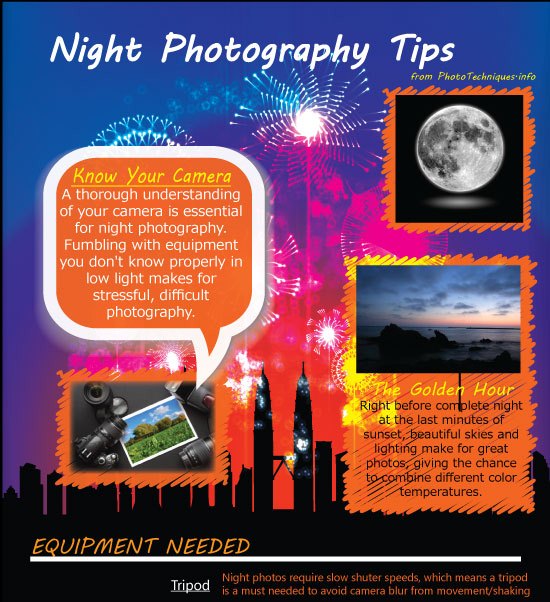Photography Tips For Beginners: Understanding Your Cam In No Time At All
Photography Tips For Beginners: Understanding Your Cam In No Time At All
Blog Article
Written By-Grant Odgaard
When you initially get your cam, it can feel overwhelming with all the setups and options readily available. You could find yourself wondering how to navigate aperture, shutter rate, and ISO efficiently. Mastering these basics is important, however there's even more to digital photography than simply technical knowledge. Comprehending composition techniques and lighting problems can elevate your photos considerably. So, what if you could find out straightforward techniques to improve your abilities and begin recording excellent photos sooner than you assume? Allow's check out how to transform your digital photography trip.
Comprehending Video Camera Setups
Understanding your camera settings is crucial for recording magnificent pictures. When you pick up your camera, familiarize yourself with the 3 primary setups: aperture, shutter rate, and ISO. Each plays a crucial function in exactly how your photos end up.
Begin with aperture, which manages the quantity of light getting in the lens. A bigger aperture (lower f-number) allows much more light and develops a stunning background blur, best for pictures. Conversely, a narrower aperture (greater f-number) maintains more of the scene in emphasis, perfect for landscapes.
Next, focus on shutter rate. This setting establishes for how long your camera's sensor is subjected to light. A quick shutter speed freezes movement, which is excellent for activity shots, while a slow shutter speed can develop magnificent effects like smooth water in landscapes.
Finally, readjust your ISO. This setup affects your video camera's sensitivity to light. A higher ISO works in low-light situations however can introduce noise or grain. Aim for the most affordable ISO feasible while still attaining appropriate exposure.
Structure Methods
When you're out shooting, composition can make all the distinction in how your photos resonate with customers. Begin by using the rule of thirds; envision your frame split into 9 equivalent sections with two straight and two upright lines. Placement key elements along these lines or at their crossways to create equilibrium and rate of interest.
Next off, take into consideration leading lines. These all-natural lines in your scene, like roadways or rivers, attract the visitor's eye into the photo, guiding them through the tale you're telling.
Don't forget mounting; usage aspects within your scene, like trees or home windows, to produce a framework around your subject, including depth and focus.
Likewise, keep an eye on your background. A cluttered history can distract from your main subject, while a straightforward one helps it stand out.
Finally, try out http://alisa57levi.xtgem.com/__xt_blog/__xtblog_entry/__xtblog_entry/37574743-contrasting-popular-cameras-which-one-is-best-for-you?__xtblog_block_id=1#xt_blog and patterns; they can create a striking picture that captures focus.
Learning Illumination Conditions
Grasping lights conditions is essential for recording spectacular pictures, as the right light can change a normal scene into something remarkable.
Beginning by observing all-natural light at various times of the day. Mornings and late afternoons offer the most effective light, called the gold hour. The soft, cozy tones during these times can enhance your pictures magnificently.
Do not avoid Studio Photo ; diffused light can reduce rough darkness and produce a pleasing effect, especially for pictures.
Explore backlighting by placing your subject against the light. This strategy can develop a dreamy halo impact and add deepness to your photos.
Focus on your video camera settings also. Readjust the ISO, aperture, and shutter rate to fit the lights conditions. A higher ISO can help in low light, however be cautious of grain.
Make use of a tripod in darker atmospheres to stay clear of blur.
Last but not least, do not fail to remember synthetic lighting. Flash and continuous lights can be fantastic tools for controlling light in difficult problems.
Conclusion
In conclusion, understanding your camera doesn't need to be overwhelming. By recognizing your settings, using composition methods, and taking advantage of the power of all-natural light, you'll swiftly boost your photography abilities. Bear in mind, exercise makes best, so get out there and explore your newfound understanding. With time and devotion, you'll be recording spectacular pictures that reflect your distinct perspective. Delight in the trip, and don't forget to enjoy while you go to it!
